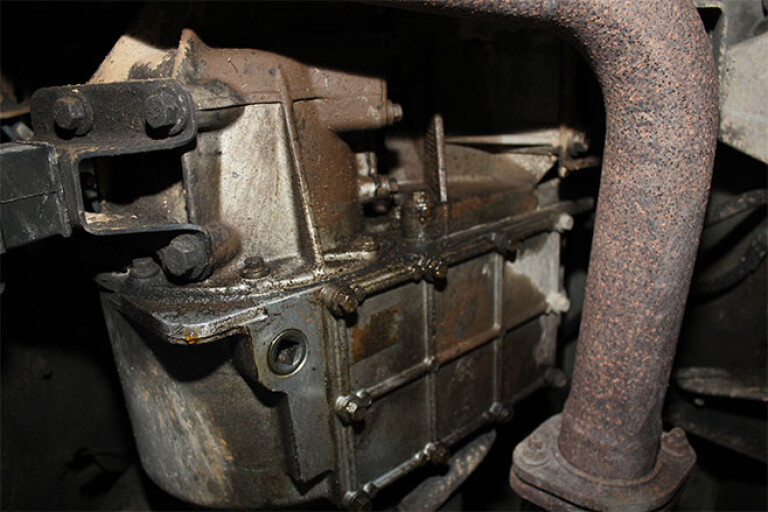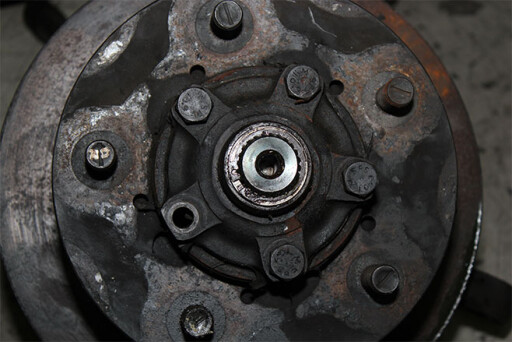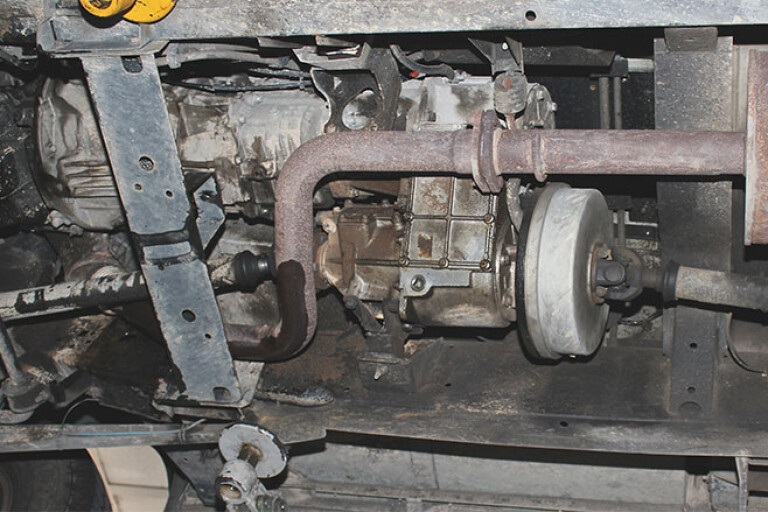.jpg )
1: Is it fit for purpose?
THE first thing any prospective buyer needs to do is nut out exactly what it is they want from their vehicle.
Is it going to be a weekend escape machine or a long-distance remote tourer? Will it be your family’s only mode of transport, or will you have a second vehicle for around-town duties?
If it’s going to be for weekends only, then a mid-sizer may suffice. If you’re aiming for more time away, then a larger wagon may be the obvious choice. If the vehicle is for both in-town and out-of-town duties, then other factors come into play. For example, older 4x4s (Patrol, 80 Series, Defender, Troopy) are more cumbersome in urban scenarios thanks to their live axle set-ups and tall bodies. It’s all about compromise, so compare how much time you’ll enjoy the off-road capabilities against its barge-like turning circles and too-tall rooflines. Of course, if the vehicle is your second, then you’d be hard-pressed to beat a kitted-out Troopy or Defender as a purpose-built tourer.
Other options to consider are fuel and transmission options, dealer support networks, and tyre/wheel combinations.
Once your preferences are finalised, you’ll have firm parameters in which to conduct your search for the perfect rig.

2: Is it within your budget?
EVERY buying decision should boil down to whether you have enough money, so stick to a budget that covers everything from the initial purchase price through to rego/ownership transfer. Also allow for vehicle insurance, service costs including major/milestone services (some brands are notably more expensive to service), the vehicle’s age, and how soon you may need to replace end-of-life parts, plus any accessories you’re keen to fit to your new rig.
The next step is to start researching prices, and there are a number of second-hand car-sale websites to check the pricing variation of your choice. It’s also a good chance to suss out the kilometres on said vehicles. A vehicle with low mileage is but one factor in a vehicle’s sales appeal (service history, overall condition). Still, it provides a guideline in regards to what to offer/expect to pay.
How to change your Differentials oil
When it comes to the asking price, expect a discrepancy between dealer and private sellers. There are pros and cons to each. With private sales, you can quiz the seller on what they did in terms of accessories and servicing, and, if they’re proud owners, they’ll have service records and receipts for any accessories. However, you don’t get the assurance of any warranty – something used car dealers have, to an extent. In most states, if someone buys a second-hand vehicle from a dealer they receive a statutory warranty limited to three months or 5000km of driving, after purchase. In NSW, VIC and WA, these only apply to vehicles less than 10 years old and have below 160,000km on the odometer. Other states differ slightly in the limits they impose, and you must read the fine print to see what is and what isn’t covered in regards to vehicle component replacement.
One last tip: just because a vehicle has accessories fitted to it, doesn’t mean you should pay a premium. These accessories have been fitted because the owner has used them in the bush, which means the vehicle has – potentially – tackled some tough stuff off-road. We’d happily pay a bit more for a city-based near-stocker every time, as there’s usually less wear and tear on components. Plus, if you get it at the right price and have an accessories budget (we’d advise strongly you do), then you have a blank canvas on which to add specific accessories.
 Rear axles can weaken and break at the splines.
Rear axles can weaken and break at the splines.
3: Decide what fuel you want.
DIESEL-powered 4x4s are popular choices for Aussie 4x4ers due to increased touring range and the fact diesel fuel is more readily available in remote communities. However, a petrol-powered 4x4 is nearly always cheaper (sometimes significantly, depending on brand and model) than its diesel equivalent, and its on-road performance will be far livelier.
If the intended purpose for the vehicle is for occasional weekend jaunts close to home, then a petrol-powered 4x4 is an excellent option. If there’s a $5K or more difference between a petrol vehicle and its diesel equivalent, that saving buys a lot of fuel in the long run. Alternatively, that difference in dosh can be used to pay for a few more essential accessories to fit to your rig.
Roothy explains how diesel engines work
For long-distance tourers, the case for diesel increases significantly. The additional touring range offered by the more economical diesel engine is the biggest factor. For example, sand driving will see a petrol engine’s consumption ramp up significantly in comparison to a diesel that utilises its abundant low-end torque. Plus, unless you are going somewhere extremely remote, you’re far less likely to need to carry extra fuel in a diesel.
Servicing costs between the two fuels are close to on par these days. Modern common-rail injected diesels require fewer services per year than the ‘old’ mechanical injected jobbies that (generally) need a service every 5000km. However, in the case of the common rail-injected donks, this increased efficiency is accompanied by higher complexity of engineering. As a result, if something goes bang (injectors, for example), you’ll be up for a slab of dosh to get it fixed. This doesn’t mean petrol engines are much cheaper, as any modern engine is expensive to repair.

4: Research each and every vehicle.
AS MUCH as we may all like the ‘look’ of a certain vehicle, or the history or ethos of a particular brand, your choice has to be all about practicality and buying the most reliable, fit-for-purpose vehicle you can afford.
Research your vehicle by trawling through past issues of 4X4 Australia for drive tests, comparisons and long-term reviews. Also spend time researching accessories available for your vehicle. Popular models will all have a number of accessories available. If you plan to build a dedicated tourer, then the more accessory options (and their ease of availability) the better.
The myriad brand-based online owners’ forums are also handy. Most members are incredibly passionate about their vehicles, but, more importantly, have loads of experience in regards to the vehicle’s quirks, costs of repairs and optimal accessories.
Outback Accessories: Industry Insider
By far the best way to research a used 4x4 is to consult the mechanics who specialise in servicing, modifying and maintaining off-road vehicles – in particular, experts in specific brands. Putting your potential purchase up on a hoist for a thorough mechanical inspection is the smartest money you will spend. The cost of a full mechanical check is not high, and the assurances make it brilliant bang for your buck. If anything looks like needing replacement or repair, you can look elsewhere or negotiate with the seller on price.
A full service history should be high on your vehicle-history checklist. Knowing you’re spending money on a well-serviced vehicle is a much more pleasant experience than taking a punt on something. If possible, on top of a regular service history, it can be worth holding out for a vehicle that’s had only a couple of owners.
5: Kit it out with aftermarket equipment.
ONCE the rig is in your driveway, the final step is the most enjoyable: kitting it out for off-road adventure. Have a separate budget for future mods/accessories, as off-road accessories are, in general, not cheap. We’re incredibly lucky here in Oz to have some of the world’s best aftermarket manufacturers and suppliers. It can often take as long to nut out what gear to fit to your rig as it did to research and buy the vehicle itself, but it is way more fun!
How to choose the right aftermarket wheels for your 4x4
THE TOORAK TRACTOR
WHEN Editor Matt asked me where to take a Discovery for as pre-purchase inspection, I immediately replied with The Toorak Tractor – an independent Land Rover Specialist – in Melbourne’s southeast suburb of Braeside.
The company’s founder, Adrian Gamble, is a mechanic of note who crewed for many years in race teams including Allan Grice in Europe.
One of Adrian’s former long-serving staff members, David Griffin, has returned to take over the reins. He took my new 2003 Land Rover Discovery TD5 for a test drive, checking all the systems and controls. He then took it into the workshop for a thorough check inside and out, before raising it on the hoist.
Overall, the Discovery was very clean for the age and kilometres covered. A few items were missing from the tool kit, and the brakes pads and rotors will be due for replacement in 10,000km. A replacement tip on the exhaust was noted and, upon further inspection, it was evident that the rear bumper had been impacted and the tail pipe had been repaired. The Discovery was given the tick of approval.
Thanks to David and Adrian for the inspection.
CONTACT
The Toorak Tractor
30 Tarnard Dr, Braeside VIC 3195
(03) 9587 2866

COMMENTS